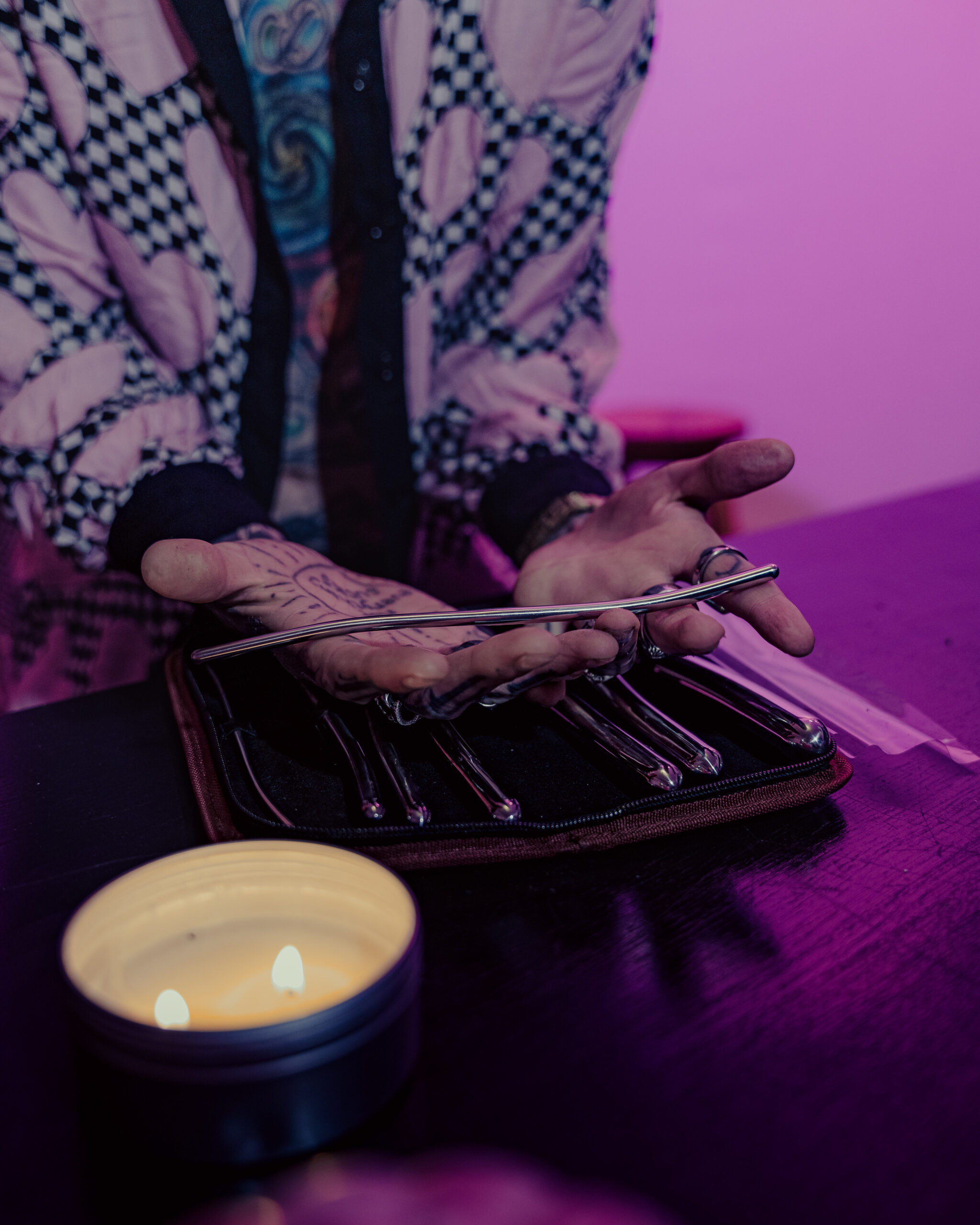Aromantic Identities
The concept of romantic attraction is central to many cultural narratives and societal expectations, but not everyone experiences it in the same way. Aromantic individuals fall on a spectrum of experiences where they may not feel or desire romantic attraction, even though they can still experience other types of love, affection, and connection.
Understanding Aromanticism
Aromanticism encompasses a spectrum of identities, each characterized by varying degrees and experiences of romantic attraction. At its core, aromanticism refers to a lack of, or significantly reduced, interest in romantic relationships. While some aromantic individuals may experience no romantic attraction whatsoever, others might feel it occasionally or only under specific circumstances.
Understanding this diversity is crucial. Some aromantic people identify as “aroace,” meaning they also lack sexual attraction. Others may be sexually attracted but not romantically. There are also those who experience romantic attraction but in ways that differ from societal norms. This could involve a preference for non-traditional relationships or a strong aversion to labels altogether.
It’s important to remember that aromanticism is not a choice or a phase; it’s a fundamental aspect of a person’s identity. Just like sexual orientation, aromanticism exists on a spectrum, and each individual’s experience is unique. Respecting these differences and fostering inclusivity are essential for creating a world where all individuals feel seen, valued, and understood.
Different Aromantic Spectrums and Identities
Aromanticism is an umbrella term encompassing a range of identities characterized by a lack of, or very little, interest in romantic relationships. It’s not about being unable to experience love or intimacy; rather, it signifies a different way of experiencing and understanding romantic attraction. The spectrum of aromantic identities is vast and diverse, reflecting the unique experiences of individuals within this community.
One common distinction is between “gray-romantic” and “aromantic.” Gray-romantics may experience some romantic attraction occasionally or in specific circumstances, while aromantics do not. Within a gray-romantic spectrum, there are further nuances, such as demiromanticism, where romantic feelings develop only after a strong emotional bond has formed.
Other identities include lithromanticism, where individuals feel romantic attraction but don’t desire a reciprocated relationship, and cupioromanticism, where individuals crave romantic connection without experiencing genuine attraction. It’s crucial to remember that these are just some examples, and many other identities exist within the aromantic spectrum.
Understanding this diversity is essential for creating an inclusive and supportive environment for all individuals, regardless of their experience with romantic attraction.
The Spectrum of Romantic Attraction
Understanding romantic attraction can be complex, as experiences vary widely among individuals. While societal norms often present a singular view of romance, the reality is far more nuanced. The spectrum of romantic attraction encompasses a diverse range of experiences, from those who feel intense longing for romantic connection to those who experience little or no desire for it at all. Exploring the nuances of this spectrum allows us to better understand and appreciate the vast tapestry of human emotions and relationships.
Levels of Romantic Attraction

Romantic attraction, often described as the desire for a romantic relationship with another person, exists on a spectrum rather than a simple binary of present or absent. Aromanticism represents one end of this spectrum, where individuals experience little to no romantic attraction. However, within this spectrum, there are various levels and experiences of romantic attraction.
Some people identify as grey-romantic, experiencing occasional or situational romantic attraction, while others may feel a mild form of attraction that doesn’t lead to a strong desire for a relationship. Similarly, some individuals might experience romantic attraction but not in the traditional way, finding it expressed through platonic connections or familial bonds.
Understanding the nuances within the aromantic spectrum is crucial for fostering inclusivity and recognizing the diversity of human experiences with romance.
Fluidity and Change in Romantic Attraction

Understanding the aromantic spectrum involves recognizing the diverse ways people experience (or don’t experience) romantic attraction. It’s a spectrum because there are many shades and variations within it. Some individuals identify as completely aromantic, meaning they do not experience romantic attraction at all. Others might fall somewhere in between, experiencing romantic attraction rarely or under specific circumstances.
Fluidity and change in romantic attraction are also important considerations. A person’s experience of romantic attraction can evolve over time, influenced by factors such as age, personal growth, life experiences, and relationships. Some aromantic individuals may find that their feelings shift and change, while others maintain a consistent sense of not experiencing romantic attraction.
Experiences Within the Aromantic Community
Navigating the complexities of romantic attraction can be challenging even within heteronormative frameworks. For aromantic individuals, this journey takes on a unique dimension as they navigate societal expectations that often center around romantic love.
Common Misconceptions About Aromanticism
Experiences within the aromantic community are as diverse as the individuals who identify with it. Some aromantics may feel no romantic attraction at all, while others may experience it infrequently or only under specific circumstances. Some may be comfortable with labels like “aromantic,” “gray-romantic,” or “demiromantic,” while others prefer more fluid or personalized descriptions of their experiences.
Common misconceptions about aromanticism often stem from a misunderstanding of what it means to not experience romantic attraction. Some people assume that aromantic individuals are simply “not ready” for romance, or that they will eventually change their minds. Others may believe that aromantics are incapable of love or intimacy, which is far from the truth. Aromantic individuals can experience deep love and connection with others in platonic relationships, familial bonds, and friendships.
Another common misconception is that all aromantic people are asexual. While some aromantic individuals are also asexual (“aroace”), many experience sexual attraction but not romantic attraction. It’s important to remember that aromanticism and asexuality are distinct orientations and that individuals can identify with both, one, or neither.
Ultimately, understanding the aromantic spectrum requires recognizing its diversity and rejecting harmful stereotypes. Aromantic individuals deserve respect and acceptance for their unique experiences and A1 Nail Art identities, just like any other group within the LGBTQ+ community.
Challenges Faced by Aromantics
Experiences within the aromantic community are as diverse as the individuals who identify as such. Some aromantics may feel a sense of relief in finding a community that understands their lack of romantic attraction, while others may experience feelings of isolation or confusion due to societal pressure to conform to traditional relationship norms.
A common challenge faced by aromantics is the misconception that they are incapable of love or intimacy. This can lead to feelings of being misunderstood and judged by family, friends, and society at large. Many aromantics find themselves explaining their identity repeatedly, often feeling the need to justify their lack of romantic desire.
Another challenge is navigating social situations where romance is heavily emphasized. Dating apps, for instance, are often geared towards finding romantic partners, leaving aromantics feeling excluded or pressured to participate in something they’re not interested in. Even casual conversations can become difficult when friends and family constantly inquire about romantic prospects.
Despite these challenges, the aromantic community is growing and gaining visibility. Online platforms provide spaces for aromantics to connect, share their experiences, and find support. Increased awareness and understanding of aromanticism are gradually changing societal perceptions, creating a more inclusive environment for all individuals to express their unique identities.
Finding Support and Connection as an Aromantic
For many aromantic individuals, finding a supportive community can be transformative. Online platforms have become invaluable spaces for connection and shared understanding. Aromantic forums, social media groups, and online dating sites specifically designed for aromantic people provide opportunities to connect with others who share similar experiences.
These virtual communities offer a safe haven where individuals can openly discuss their feelings, navigate challenges related to societal expectations, and celebrate the beauty of aromantic identities. They also serve as valuable resources for information, offering support and guidance on topics ranging from coming out to finding healthy relationships.
Beyond online spaces, real-world connections are equally important. Attending local meetups or joining aromantic organizations can facilitate in-person interactions, fostering friendships and building a sense of belonging.
Finding people who understand and validate your experiences can be incredibly empowering, helping to alleviate feelings of isolation and loneliness.
Aromantic Relationships and Expression
The concept of romantic attraction is often presented as universal, but the reality is far more complex. Aromanticism describes a spectrum of experiences where romantic attraction is absent or significantly reduced. Understanding this spectrum is crucial for recognizing and respecting the diversity of human experiences with love and relationships.
Romantic vs. Platonic Relationships
Aromantic relationships and expression encompass a wide range of experiences, just as romantic relationships do. While romantic attraction isn’t a defining feature of these relationships, a deep sense of connection, intimacy, and affection can be present.
Some aromantic individuals may choose to engage in relationships that prioritize platonic love and companionship, while others might seek out romantic-like connections without the expectation of traditional romance. It’s important to remember that there isn’t a single “right” way for an aromantic person to express their feelings or build relationships.
The key distinction between romantic and platonic relationships often lies in the nature and intensity of the attraction. Romantic relationships are typically characterized by a desire for physical intimacy, emotional exclusivity, and a long-term commitment. Platonic relationships, on the other hand, prioritize friendship, shared interests, and mutual support without the expectation of romantic involvement.
However, these lines can be blurred, and what constitutes “romantic” or “platonic” varies greatly depending on individual experiences and perspectives. For some, a deep emotional connection with another person can feel profoundly romantic even without sexual or physical intimacy.
Queerplatonic Relationships
Queerplatonic relationships offer a beautiful alternative to traditional romantic relationships for individuals who desire deep connection and intimacy without the expectation of sexual or romantic love.
These relationships are based on shared values, mutual respect, and emotional closeness, allowing for profound bonding and support without the pressures associated with romance.
Queerplatonic relationships can take many forms, encompassing a range of dynamics and commitments similar to friendships or partnerships.
Like any relationship, queerplatonic connections require open communication, understanding, and mutual consent. They thrive on honesty, trust, and the willingness to nurture emotional intimacy without relying on romantic tropes or expectations.
Expressing Affection in Aromantic Ways
Aromantic relationships exist on a spectrum just like romantic relationships. Understanding how aromantics express affection is key to fostering healthy and fulfilling connections. While physical touch or grand gestures might not be the primary way aromantics express love, there are many other meaningful ways they connect with their partners.

- Quality Time: Spending dedicated time together, engaging in shared activities, and having meaningful conversations is often highly valued by aromantic couples.
- Acts of Service: Demonstrating love through acts of service, like helping with chores, running errands, or offering practical support, can be a powerful way to show affection.
- Words of Affirmation: Expressing feelings of care, appreciation, and support verbally can be deeply meaningful for aromantic individuals.
- Gifts: Thoughtful gifts that reflect the recipient’s interests or hobbies can be a way to express love and thoughtfulness.
It’s important to remember that what constitutes “affection” varies greatly from person to person, regardless of their romantic orientation. Open communication is crucial in any relationship, and aromantic couples are no exception. Talking about needs and preferences ensures both partners feel seen, heard, and cherished.
Navigating Society’s Expectations
Navigating societal expectations surrounding romantic attraction can be challenging for everyone, but especially for those who identify as aromantic. Aromanticism encompasses a diverse range of experiences, where individuals may not experience or desire romantic attraction in the same way that others do.
Pressure to Conform to Romantic Norms
Navigating societal expectations and pressure to conform to romantic norms can be particularly challenging for aromantic individuals.
- Misconceptions about aromanticism often stem from a lack of understanding.
- Aromantic individuals may face pressure to explain or justify their lack of romantic attraction.
- Social situations that center around romance can feel exclusionary or uncomfortable for aromantics.
- Finding supportive communities and allies can help aromantic individuals navigate these challenges.
Communicating Aromantic Identity to Others
Navigating societal expectations around romantic relationships can be challenging for anyone, but it can be especially complex for aromantic individuals. Many cultures and social norms center around the idea of romantic love as a fundamental aspect of human experience, leading to pressure to conform to these expectations even if they don’t align with personal feelings.
Communicating an aromantic identity to others can be a deeply personal journey, influenced by factors such as comfort level, support system, and individual circumstances. Some aromantic people choose to come out openly about their identity, while others prefer to keep it private or disclose it selectively. It’s essential to remember that there is no right or wrong way to navigate this process.
Openly communicating your aromanticism to trusted friends and family can be a step towards building understanding and acceptance. Sharing your experiences in an authentic way can help dispel common misconceptions and create space for honest conversations about love and relationships in all their diverse forms.
Remember, it’s important to prioritize your own well-being and safety when deciding how and when to share your identity. You are not obligated to explain or justify your feelings to anyone who is not willing to listen with respect and empathy.
Advocacy and Visibility for Aromantic People
Navigating societal expectations can be challenging for aromantic individuals as societal norms often prioritize romantic love. Aromantic people may encounter assumptions that they are simply waiting to find the right person or that their lack of romantic desire is a phase. It’s important for aromantics to advocate for their identities and educate others about what it means to be aromantic. This can involve coming out to friends, family, and colleagues, explaining their experiences, and challenging misconceptions.
Visibility plays a crucial role in fostering acceptance and understanding. Seeing positive representations of aromantic individuals in media, literature, and everyday life can help normalize their experiences and reduce feelings of isolation. It’s important to celebrate the diversity within the aromantic community and showcase the richness of their lives and relationships.
Aromantic people can also advocate for inclusivity in social spaces, including online platforms and dating apps. By sharing their stories, participating in discussions, and demanding representation, they can contribute to creating a more welcoming and accepting environment for everyone.
Building a strong support system is essential for aromantic individuals navigating societal expectations. Connecting with other aromantic people, either online or in person, can provide a sense of belonging and shared understanding. Joining online forums, attending meetups, or finding local aromantic organizations can offer opportunities to connect with like-minded individuals who share similar experiences.
how to fuck sideways
Alkhemist LA
- The Emotional Toll Of Breadcrumbing And How To Reclaim Control - June 2, 2025
- What Are The Risks Of Cheap Non-Surgical Bum Lifts? - June 2, 2025
- Sapiosexuality Demystified: When Intelligence Is The Ultimate Turn-On - June 1, 2025
